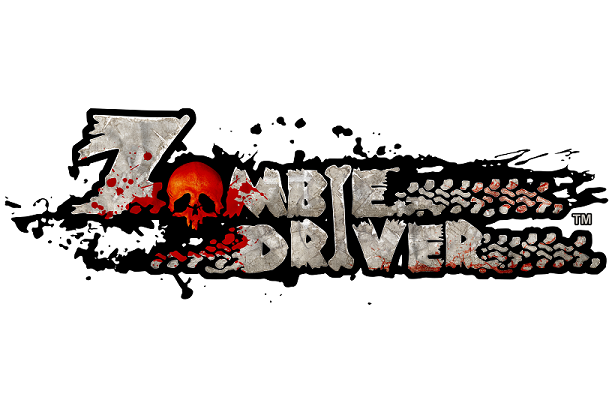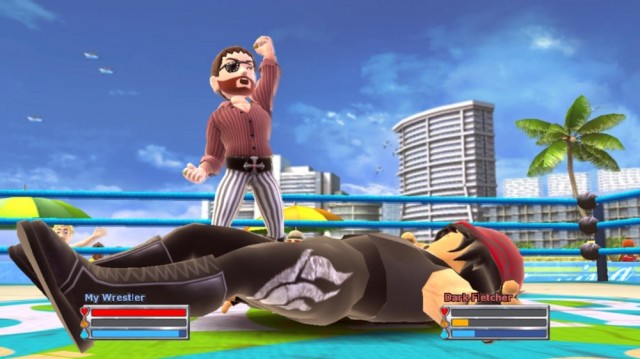 13 years ago
13 years ago
Indies need someone they can trust for usability and QA testing — How about The Behemoth?
Somewhere in San Diego there exists a couple of buildings. They’re buildings with glass windows and a soft feeling, or so I’ve been told. They’re buildings that are “not too intimidating” when compared to other species in their particular building genus. At least, that’s how The Behemoth President John Baez described them to me at the tail end of a roughly 32-minute interview that took place in Boston last weekend during PAX East. Baez and Level Designer Ryan Horn shared their thoughts on several topics: BattleBlock Theater, what the studio would like to see from the next-gen version of Xbox Live Arcade and the developer’s thoughts on working with Microsoft.
Yes, we managed to cover a lot of ground. This despite the fact that we were sitting comfortably in folding chairs set up in a largely unoccupied space behind the booth over which hung a large arrow bearing a single word: “Behold.” What precisely the attention of PAX attendees was being called to may not have been initially palpable to the first-timers among them, but then again, nor was it to the XBLAFans crew when Horn and Baez — the latter fielding an increasing percentage of the questions we asked the two men — began talking about video game prototypes.
Our attention, as it turned out, was being directed towards those two buildings. Or rather, what goes on inside their walls.
They’re not buildings in which the developer makes games, mind you. They are buildings in which the developer tests games to see if they work. Interestingly, one of the games that has been analyzed there isn’t property of The Behemoth — it’s property of fellow successful indie studio Supergiant Games. And at some point this summer, the iOS version of Bastion will lose the distinction of being the only game from another developer to be put through its paces by The Behemoth. The studio will begin using its pair of non-development buildings to investigate whether or not all manner of foreign games work in the manner that their designers intended them to, and whether or not that’s the way they should work.
The Behemoth will task those working inside the friendlier-than-most-of-their-kind buildings with providing quality assurance (QA) and usability lab services to fellow independent game developers. One indie should help another indie. This type of help, however, will come with a price tag — and not a discounted one.
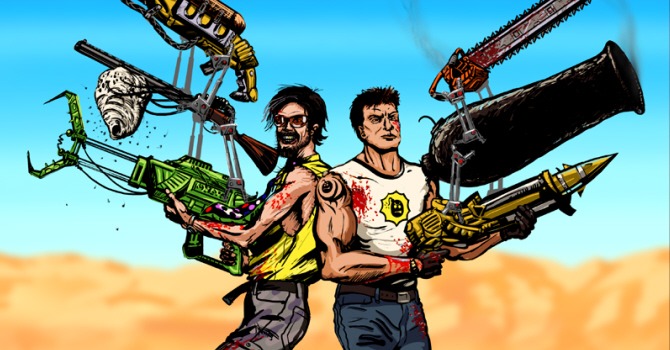 13 years ago
13 years ago
Serious Sam’s Nathan Fouts loves ‘crazy-ass guns’
We’ve just seen the release of Serious Sam Double D XXL, a game we recommended for its classic shooting action rebuilt into two dimensions. Behind all its artistic style, crazy weapons and even more crazy enemies is one man: Nathan Fouts, owner of indie development studio Mommy’s Best Games. We caught up with him to ask about how he put together Serious Sam Double D XXL, starting from its inception on PC to its massive expansion on Xbox Live Arcade. When we asked how it feels to have the game out and finished, he joked, “I think I’m still ready to go back to sleep!”
Serious Sam’s jump to 2D
Serious Sam is a beloved franchise known for its old-school Doom-esque shooting that relies heavily on strafing and jumping while making players fight off swarms of aliens, monsters and headless kamikaze bombers. Leveraging his PC popularity, Serious Sam has gone on to make numerous cameos on Xbox Live Arcade in both new and classic games. However, they have all been 3-dimensional first-person shooters. How did Fouts score a gig that involved smashing it into two dimensions? As it turns out, “Devolver came to us and said that they were interested in this prospect and that it involved Croteam [the creators] and the Serious Sam franchise,” he explained. “I just about flipped my lid. I couldn’t believe it. [They told me] they liked our stuff and they’d like us to do this indie version.”
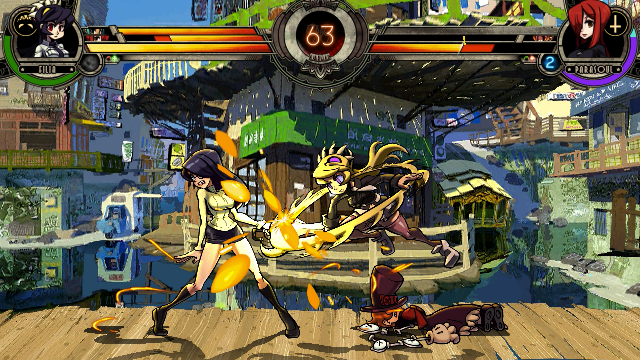 13 years ago
13 years ago
Sticks and stones couldn’t break Skullgirls’ bones
The story of Skullgirls‘ development, release and post-release support just may have more twists to it than its top-heavy characters have curves on their pixelated bodies. It started with two men, each with a skill, a passion and an idea. In 2009, longtime fighting game fan and tournament player Mike “Mike Z” Zaimont began programming a fighting game of his own. Elsewhere, unbeknownst to Zaimont at the time, artist Alex “o_8” Ahad was drawing a new fighting game universe of his own into existence, complete with characters to populate it. Eventually the two were introduced and merged their pet projects together at Reverge Labs into the game that released on XBLA and PSN in April of last year as Skullgirls.
Critics generally gave the game a favorable reception, with its combined XBLA and PSN score averaging 80% on Metacritic. Gamers gave it a fairly warm reception, too. The developer was excited when Skullgirls sold 50,000 copies in its first 10 days on the market. Although the development team informed XBLAFans on Thursday that Skullgirls has failed to turn a profit to date, we were also informed that the game has performed well enough that publisher Autumn Games is interested in green-lighting a sequel if it can successfully dodge the sticks and stones City National Bank has thrown its way.
With a PC version, DLC characters and multiple sequels in the plans, things were looking up for Zaimont, Ahad and the rest of the crew at Reverge. Then everything went quiet. Months went by without a single update on the port, downloadable content or the sequel. It was eventually revealed that the Skullgirls team had been let go by Reverge Labs in June of 2012 after developer and publisher allowed their contract to expire without agreeing upon a new one. More sticks. More stones.
Whether it was the entire team that was let go or some fraction of it has been a matter that was up for some debate. Reverge blogged that it was some of the team, while the displaced developers once said it was “the entire” team. When questioned repeatedly by XBLAFans over the past couple of months, neither of those factions nor Autumn has been willing to go on record to clear the air. The one thing that has been abundantly clear, though, is that the contract expiration effectively brought about a game over screen for future Skullgirls content and its would-be creators.
Or did it?
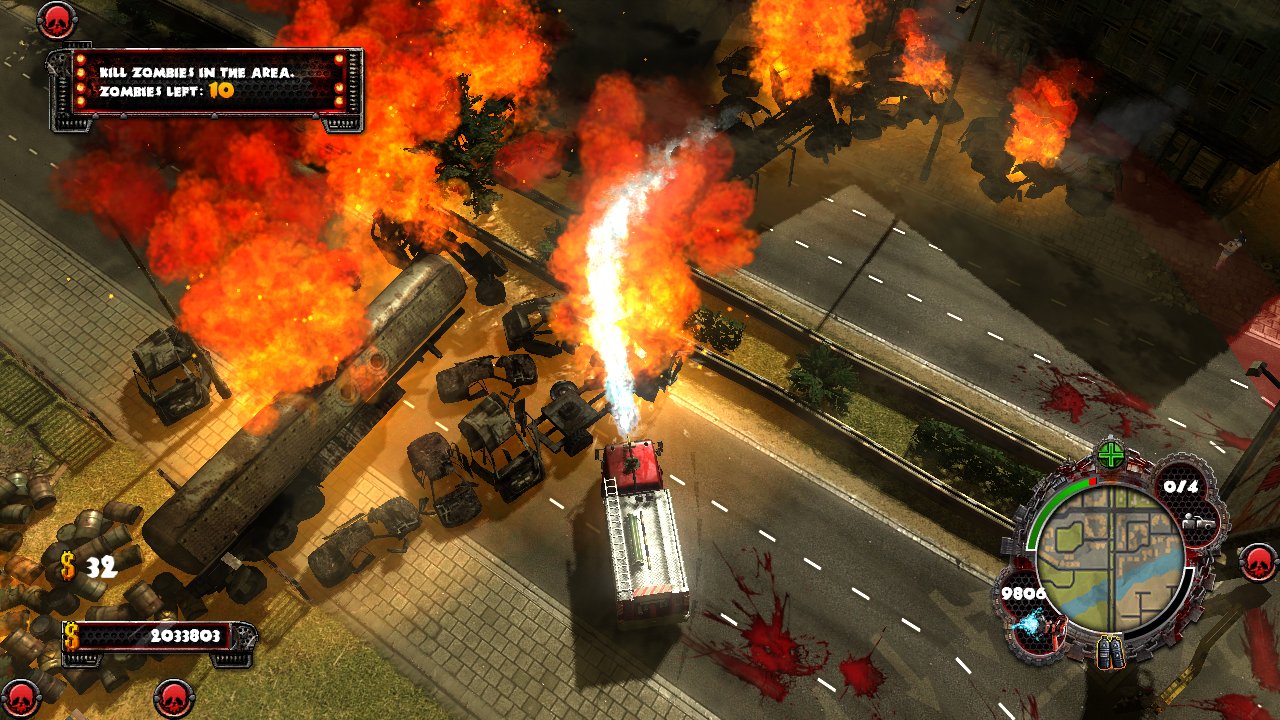 13 years ago
13 years ago
Zombie Driver HD in-depth interview
XBLA Fans recently had the opportunity to chat with Pawel Lekki, COO at Exor Studios. Exor’s Zombie Driver HD released on XBLA this past October, and Lekki was more than willing to talk about the title as well as his background in game development.
Pawel, please tell us a few things about yourself outside of the world of gaming.
I think there isn’t much outside the world of gaming because I spend most of my day at work to be honest. But if I’m not working I enjoy travelling by car around Europe. Moving around in your own vehicle gives a lot of freedom, and I annually make road trips with a few friends. Our record braking trip so far was visiting 11 countries in 7 days with a total of 5000km on the road.
How did you get into game development?
The first gaming-related thing I did [actually involved] classic role playing games. I was a game master for 5 years, and together with our team we created our own version of one of the popular RPG systems. I guess you could say we started modding with pen and paper.
When it comes to traditional computer game development, I started by making levels for various games with my brother. The first game for which we made our own maps was Age of Empires, then StarCraft, and later we moved on to first person shooters like Unreal Tournament, Quake 3 and Half-Life. The first Make Something Unreal contest actually played an important role in our journey because it made us go public and share our works on the internet. After that we started working on mods for Half-Life and informally started Exor as a modding group. Our first public mod was ‘D.I.P.R.I.P.’ for Half-Life 2 and because of our work on it we were all hired by a Finnish mobile game development company called Gamelion. That was the beginning of my professional game development career which started 7 years ago.
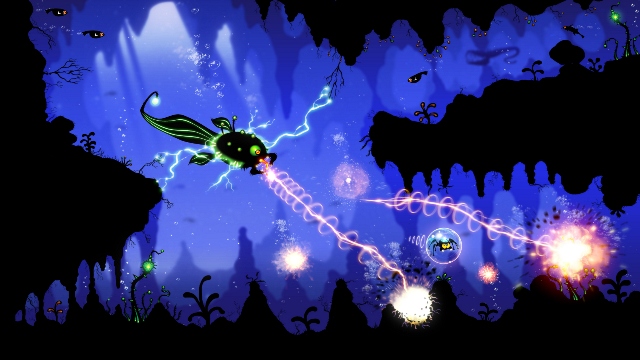 13 years ago
13 years ago
Daniel Parente tells us why Alien Spidy must ‘be water’
Heading to XBLA later this fall, Enigma Software’s Alien Spidy is a game that’s about as true to the descriptor “traditional platformer” as modern games come. It doesn’t arm the player with crazy weapons. It doesn’t have sandbox, shooter or RPG elements. Its story is set up with the time-honored tradition of the protagonist’s girlfriend going missing. Players guide a space-traveling spider from left to right and run, jump and swing over enemies, pits and other environmental hazards. Simple, right? Maybe when broken down like so, but it also has that other element of the classic platformer: when you play it, you sometimes die.
Certainly it’s not the first game on modern consoles to make simply progressing from left to right a challenge. Other games featuring far tougher gameplay have come and gone over the past decade, but it’s still a trait worth mentioning. Alien Spidy approaches difficulty by stripping the player of any and all offensive capabilities, putting deadly hazards in his way and keeping him coming back for more with a forgiving checkpoint system. Anyone who’s played a platformer before can pick this one up and immediately start progressing, but don’t expect to do so unchallenged. To find out more about how the game works, XBLA Fans spoke with Enigma CEO Daniel Parente.
Alien Spidy is, as the name implies, a game starring an alien spider. Now, it seems to me that there are plenty of good (bad?) spiders right here on planet Earth, so I have to ask: why make the character an alien?
Daniel Parente: Indeed there is quite a lot of spiders on Earth, but we thought that an alien one would give us greater freedom to make it different and less “spidery” with a more human touch to avoid the arachnophobia to take place. Plus, an alien spider was giving us the logical possibility of [a] player with power-ups [and] a cool spaceship.
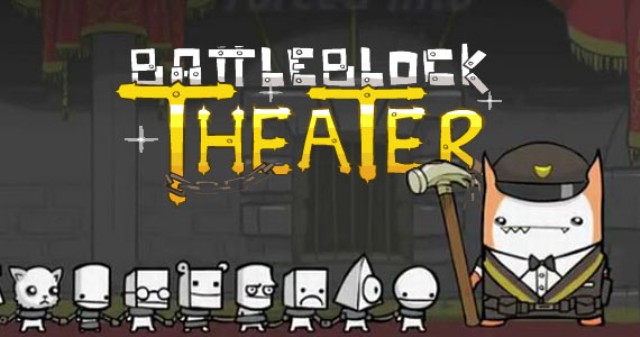 13 years ago
13 years ago
Interview: The Behemoth’s Dan Paladin
Launched in 2008, The Behemoth’s Castle Crashers went on to become one of the most popular co-op experiences on XBLA, with it just recently having crossed over the 3 million player threshold on its leaderboards. More than just inspiring gamers to fight with and against each other for the right to make out with princesses, though, the title also put the development community in a scramble to get their own take on the genre onto the platform. While none have enjoyed the same runaway success that Crashers has, certainly their collective presence has made the platform a modern haven for games of its ilk.
If PAX Prime was any indication, the rush isn’t going to be slowing down any time soon. The show floor was full of promising (and not-so-promising) 2D side-scrolling action games, and our team played just about every single one of them. On the second day of the show, XBLA Fans caught up with one of the men responsible for kicking off the craze, The Behemoth co-founder and Art Director Dan Paladin. He was open to talking about everything from the state of the beat-em-up to the studio’s past projects to its current one, BattleBlock Theater, to developing for XBLA. In fact, about the whole thing Paladin declined to discuss was BattleBlock‘s release date. It’s a subject he says the studio hasn’t talked about since it announced a 2010 release that it was unable to meet, a strategy that he claims hasn’t stopped the press or the public from announcing dates on their own. Read on for the full details.
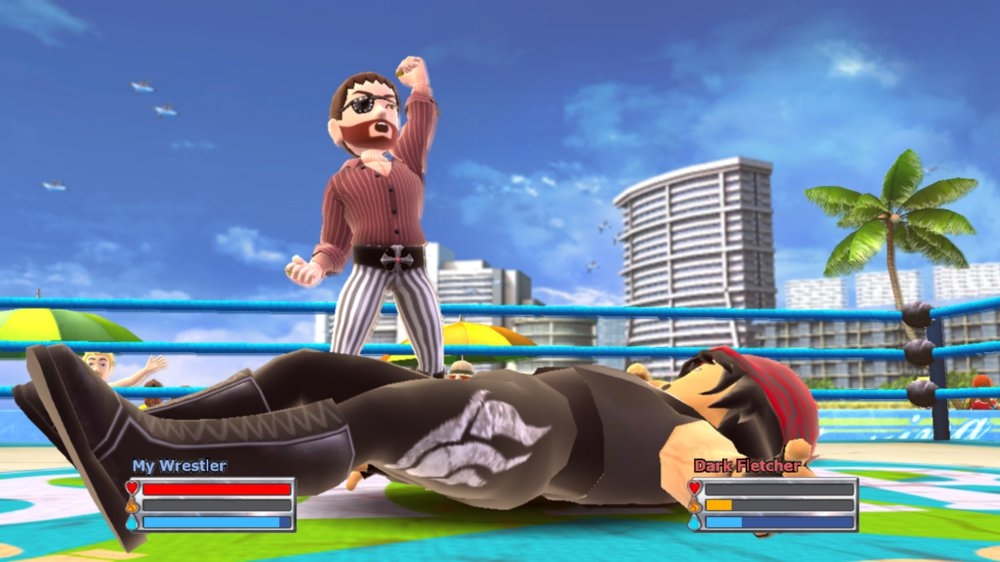 13 years ago
13 years ago
Avatar support to be thanked for Fire Pro Wrestling revival
Fire Pro Wrestling returned to consoles last Friday following a seven year hiatus. However in a break from the traditional look of the franchise, Fire Pro Wrestling on XBLA allows players to create their own wrestler using their Xbox Live Avatar. XBLA Fans recently got together with Yasuhiro Iizuka from Spike Chunsoft to see what triggered the revival and what inspired the move to Avatar support.
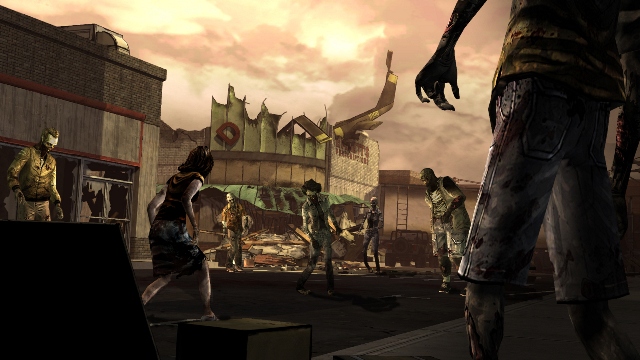 13 years ago
13 years ago
Interview: The Walking Dead Designer Harrison Pink
It didn’t rain in Seattle during PAX Prime earlier this month. It’s a little odd that the city didn’t get any of the precipitation for which it is so well-known. Stranger still, however, are the weather patterns in The Walking Dead that Telltale Designer Harrison Pink told Perry Jackson and I about when we caught up with him on the second day of the show. Zombie storm fronts, you see, are an accepted, regular occurrence in the game world. Unusual weather phenomena aside, Pink had plenty to share about the first Walking Dead season. So break out your shotgun umbrella and prepare to weather the storm.
You guys just recently released The Walking Dead: Episode 3. What has the reception of it been like? Are you happy with it?
Harrison Pink: Oh yeah, it’s been awesome. It’s blown me away. You know, you get so head-down on finishing an episode, after a while you get really myopic on it, and it just gets like all you can see are the flaws, like ‘Aww, we left that on the table. Awww, we really didn’t have time to fix that.’ So, I’m really glad that releasing to the world has been such an awesome reception. I’m really glad that everyone has been loving it slash hating it.
I felt like Episode 1 set up the story, Episode 2 kind of wanted to go for that shock value and Episode 3 really just wanted to hit it home to your heart. It felt like a nice middle moment to the whole series so far.
Pink: Yeah, that was kind of the idea. I mean, you know, Sean [Vanaman] and Jake [Rodkin], the leads on The Walking Dead had the story sort of planned out way in advance. Even before the first line of dialogue for The Walking Dead was written, they already knew how the story was going to end and sort of where the middle is and all the events that are going to happen.
So, these sort of events are the kind of thing you have in The Walking Dead. Right? Like these things happen in The Walking Dead, so people kind of knew going in what we could push it to, and so this is exactly where the halfway point makes sense in the story.
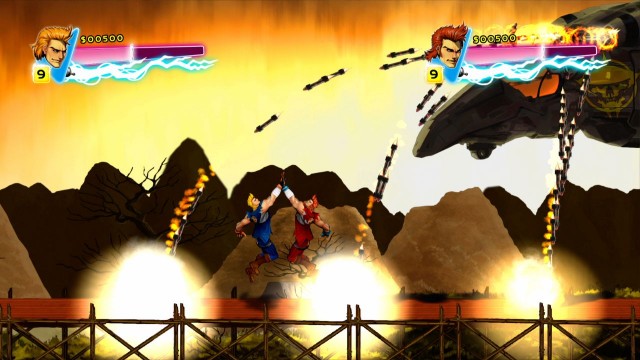 13 years ago
13 years ago
Double Dragon: Neon embraces the cheese and looks good doing it
It’s not a remake; it’s a reimagining, Majesco Entertainment Assistant Product Manager Pete Rosky told XBLA Fans at PAX Prime a moment before handing over the controller. Having taken a trip down memory lane with the original Double Dragon at Philadelphia’s Barcade only a month prior, I was in prime position to discover the truth behind that statement. As it turned out, Double Dragon: Neon plays remarkably like the game that launched the franchise a quarter of a century ago, which isn’t necessarily a bad thing. Wayforward Technology’s take on the series might have trouble impressing younger gamers, but the PAX demo was an enjoyable romp down memory lane.
Players take control of Billy and Jimmy, with their simultaneously awful and amazing hair and begin whomping on every street tough in site. There’s a fantastic new coat of paint on this aging ’80s muscle car, thus the subtitle, but every curve has that old familiar look and feel. The combat system has a couple of new tricks up its sleeve in the form of throws and special moves, but the kicks, punches and melee weapons are essentially ripped right out of the original. What is presumably either Billy or Jimmy’s girlfriend gets mercilessly slugged and kidnapped in the beginning and the duo brawl through those same old streets on a collision course with the original’s first boss, Abobo, who looks as if he’s sampled more than his fair share of steroids since his last showdown with the boys. And then you walk into a pagoda that turns out to be a spaceship that rockets Billy and Jimmy into space. That, as Rosky explained, is where Neon departs from the original. No kidding.
Bigger hair, bigger bosses, brighter colors and longer distance travel may or may not be enough to justify the reimagining label — you’ll have to wait for our forthcoming review of the full game for that ruling — but they certainly establish a new theme. It’s a completely silly and ridiculous theme, and that feels completely appropriate for an homage to an ’80s brawler that was a lot of things in its day, but never serious. That doesn’t mean the approach was an obvious one for the team to take, though.
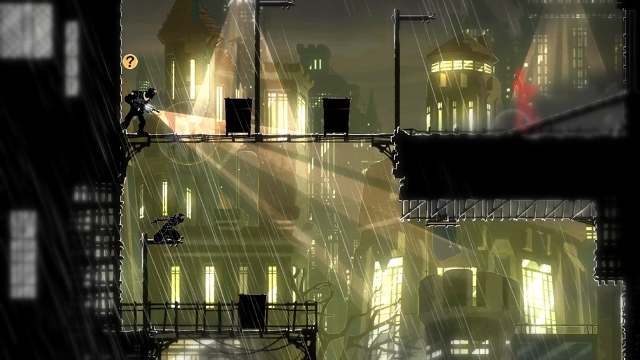 13 years ago
13 years ago
Mind of the Ninja
When Konami’s legendary game designer Hideo Kojima shows up to discuss what he’s been up to and then proceeds to show it to the world for the first time, it tends to expose the fact that the event he’s showing it at has become a bit of a big deal. There was no need for Kojima’s traditionally obligatory exclamation points to suddenly appear over the heads of the PAX Prime enforcers to make that much clear. The Big Stealth Game, Metal Ground Solid: Ground Zeroes, was revealed on the big stage to the delight of seemingly everyone watching.
Not all eyes were glued on Kojima, however; back on the show floor PAX’s little stealth game was leaving everyone who found their way to Klei Entertainment’s little corner in the not-so-little Indie Megabooth equally impressed. The XBLA Fans team had previously gotten our hands on Mark of the Ninja back at PAX East, but that didn’t make us any less eager to take it for another spin or to speak with its lead designer, Nels Anderson.
On Friday the game will release on XBLA. Long before getting to that point, however, the studio had to commit to setting out in a completely different direction than it did with its previous work on the Shank franchise. Doing so meant forging a mostly new path, since very few 2D stealth-oriented games had come along over the years to lay down the groundwork. I asked Anderson if that meant Klei had some unique challenges to overcome while developing the game. Laughing, he rhetorically replied, “Um, all of them?”
“All of them, in fact!” the designer exclaimed, now seemingly convinced that it was in fact all of the systems that presented challenges. “Because no one’s ever really done one, right? Like there were a couple very, very small ones, but certainly nothing to this scope or magnitude — at all. So then it’s like, we just sort of had to like really look at 3D stealth games and sort of reconstruct them design-wise. Like, ‘Why did they make the kinds of decisions they made?’ And then take that up a level and translate it back down to 2D.
“I mean, there aren’t templates or schemes to drop in in this context — at all. Which is good, it just means we had to try a whole lot of stuff that didn’t work before we got to stuff that actually did work.”



